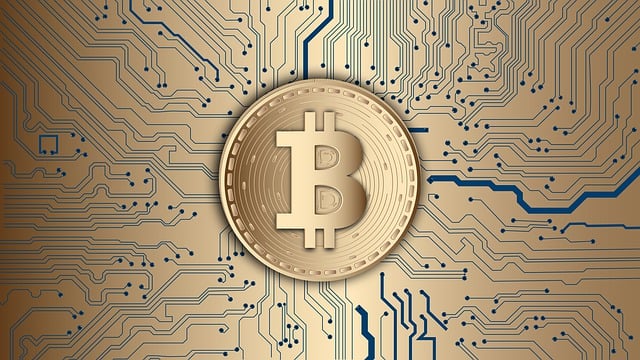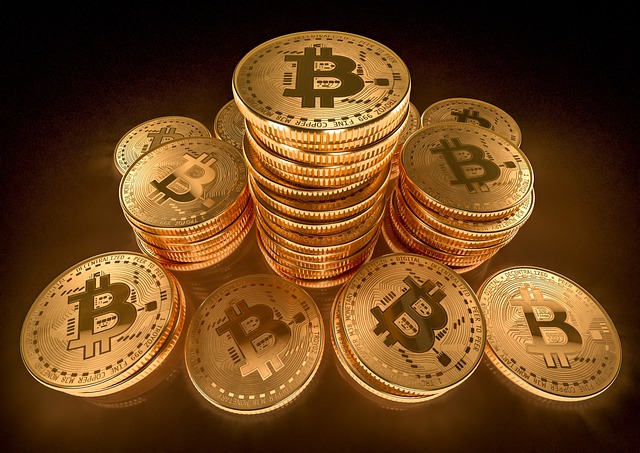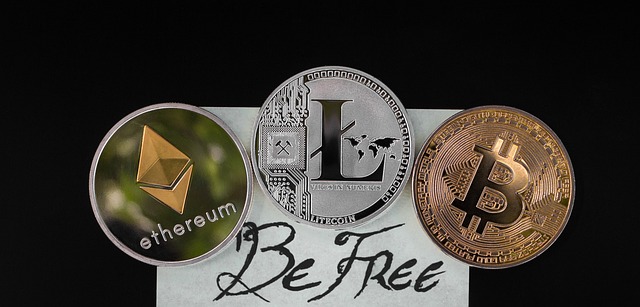Stablecoins act as a shield against cryptocurrency volatility, making them attractive during positive market sentiment (bull markets). Their algorithms and reserve-backed mechanisms ensure a stable value, serving as a safe haven for investors. During bullish periods, high demand for stablecoins correlates with positive investor sentiment on platforms like Twitter and increased media coverage of DeFi. These digital assets facilitate entry and exit from the crypto market, bridging traditional finance and DeFi while normalizing cryptocurrency adoption. As global regulatory bodies navigate their integration into monetary policies, balancing innovation and stability is crucial for both centralized and decentralized stablecoins to gain mainstream acceptance.
Stablecoins, a unique class of cryptocurrencies, have emerged as a cornerstone in the cryptocurrency landscape. This article explores their monetary policy and profound impact on crypto markets, especially during bull runs. We delve into how stablecoins mitigate volatility, analyze market sentiment shifts, and examine their benefits for investors and central banks. Additionally, we present case studies highlighting the effects of bull markets on adoption and value, while discussing potential regulatory frameworks governing this evolving asset class.
- Understanding Stablecoins and Their Role in Cryptocurrency Markets
- The Impact of Bull Markets on Stablecoin Adoption and Value
- Mechanisms Behind Stablecoin Monetary Policy: A Deep Dive
- Market Sentiment Analysis During Bull Run: Case Studies
- Benefits and Challenges for Investors and Central Banks Alike
- Future Prospects and Potential Regulatory Frameworks
Understanding Stablecoins and Their Role in Cryptocurrency Markets

Stablecoins, a unique class of cryptocurrencies, have emerged as a pivotal force in shaping the dynamics of cryptocurrency markets. These digital assets are designed to maintain a stable value, typically pegged to a traditional fiat currency like the US dollar or Euro, or even other commodities like gold. This stability sets them apart from volatile cryptocurrencies like Bitcoin, making them an attractive option for investors and traders during bull markets. During periods of positive market sentiment when cryptocurrency prices soar, stablecoins offer a sense of security and predictability in what can be an otherwise turbulent environment.
Their role extends beyond providing a safe haven; stablecoins facilitate easier entry and exit from the crypto market. They serve as a bridge between traditional finance and decentralized finance (DeFi), enabling users to participate in various DeFi applications while minimizing exposure to excessive price volatility. As such, stablecoins play a crucial role in normalizing cryptocurrency adoption by addressing concerns related to risk and price stability, which are often cited as barriers to entry for new investors.
The Impact of Bull Markets on Stablecoin Adoption and Value

Mechanisms Behind Stablecoin Monetary Policy: A Deep Dive

The mechanisms behind stablecoin monetary policy are intricate and designed to maintain price stability, a key feature that sets them apart from volatile cryptocurrencies. During bull markets, where market sentiment is bullish and prices are on the rise, stablecoins play a crucial role in mitigating risk and providing a safe haven for investors. Their algorithms are built to adjust supply dynamically, responding to changes in demand. When prices surge, some stablecoins employ reserve-backed mechanisms, ensuring that each coin is supported by a corresponding reserve asset, typically fiat currency or commodities. This ensures that the coin’s value remains pegged, shielding it from market volatility.
Stablecoin protocols also incorporate smart contracts, enabling automated responses to market conditions. These contracts can facilitate burning (removing) or minting (creating) coins based on predefined criteria. For instance, during a bull run, if demand outstrips supply, the contract might automatically increase coin issuance to meet demand and maintain the desired price level. Conversely, in bear markets with negative market sentiment, the reverse occurs—coins are burned to absorb excess liquidity, supporting the price recovery. This dynamic approach allows stablecoins to adapt to market fluctuations, offering a unique blend of stability and flexibility within the cryptocurrency ecosystem.
Market Sentiment Analysis During Bull Run: Case Studies

During bull runs, market sentiment analysis plays a pivotal role in understanding the dynamics driving stablecoin adoption and value appreciation. This period, characterized by widespread optimism and increasing investment enthusiasm, offers valuable insights into investor psychology and expectations. Case studies from past bull markets reveal that positive sentiment often translates to higher demand for stablecoins, as investors seek safe havens or leverage the growing market momentum. Social media sentiment analysis, news coverage trends, and on-chain metrics all contribute to gauging this market sentiment during bullish phases.
For instance, a 2021 study observed a significant correlation between Twitter sentiment towards major stablecoins like USD Coin (USDC) and price movements. Similarly, the surge in media coverage of decentralized finance (DeFi) and blockchain technology during bull runs has been linked to increased trading volumes and network activity for stablecoins, highlighting their integral role in facilitating access to these emerging financial systems.
Benefits and Challenges for Investors and Central Banks Alike

Stablecoins, a unique class of cryptocurrencies designed to minimize price volatility, offer both investors and central banks compelling advantages in today’s financial landscape. During bull markets characterized by rising market sentiment, stablecoins provide a safe haven asset, preserving wealth and offering liquidity when traditional markets experience heightened volatility. This is particularly beneficial for investors seeking to capitalize on bullish trends while mitigating risk.
For central banks, stablecoins present intriguing challenges and opportunities. They can facilitate enhanced financial inclusion by providing low-cost, borderless money transfers, thereby expanding access to global financial markets. However, the decentralized nature of cryptocurrencies poses regulatory hurdles, compelling central banks to navigate complex issues related to monetary policy, financial stability, and supervision in this nascent space. Balancing these benefits against potential risks is crucial as stablecoins gain traction in the global financial system.
Future Prospects and Potential Regulatory Frameworks

As stablecoins gain traction and market sentiment during bull markets becomes increasingly positive, the regulatory landscape is poised for significant evolution. Central banks and financial regulators worldwide are actively exploring how to integrate these digital assets into existing monetary policies while mitigating potential risks. The future prospects of stablecoin monetary policy hinge on striking a delicate balance between fostering innovation and ensuring stability.
One potential regulatory framework involves centralized stablecoins being subject to the same oversight as traditional financial institutions, with stress tests and capital requirements. Decentralized stablecoins, on the other hand, might be treated differently, given their unique operational models and risk profiles. Regulatory clarity will be crucial for attracting institutional investors and fostering mainstream adoption, especially during periods of market growth and optimism.
Stablecoins have emerged as a pivotal force in cryptocurrency markets, offering both innovative solutions and complex challenges. As we’ve explored through this article, understanding their monetary policy mechanisms is crucial for navigating the dynamic landscape of digital assets. The impact of bull markets on stablecoin adoption and value is significant, highlighting the need for robust market sentiment analysis. While these digital currencies present benefits for investors and central banks alike, they also come with challenges that require thoughtful regulatory frameworks to ensure stability and consumer protection. By examining case studies and considering future prospects, we can better prepare for the evolving role of stablecoins in global finance.
